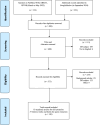Liberating the mental health and wellbeing benefits of laughing alone: a new taxonomic model and scoping review for future research
- PMID: 40295448
- PMCID: PMC12037970
- DOI: 10.1007/s44192-025-00183-9
Liberating the mental health and wellbeing benefits of laughing alone: a new taxonomic model and scoping review for future research
Abstract
Laughter has been predominantly viewed as a social behavior, and laughing alone is often regarded doubtfully, even pathologized. While solitary laughter can be symptomatic of mental health issues, one motivation of this review was to explore whether it can also offer mental health benefits. Research demonstrates that over 10% of laughter occurs in solitude and there is increasing awareness that it is not only enjoyed but can serve important roles in supporting health and wellbeing. To establish a useful foundation for further exploration of its potential in enhancing health and wellbeing, this review scopes the subject across disciplines. An unprecedented search revealed 120 records (n = 83 academic articles n = 37 literary and book references) that mention solitary laughter in meaningful ways. The Solitary Laughter Model (SLM) developed for this research supported an initial classification according to the conditions in which the laughter took place be it complete solitary, public solitary, assisted solitary, or social solitary laughter. Our research reveals that laughing alone tends to be perceived as particularly problematic when done in public. Nevertheless, we also uncovered favorable mental health perspectives on solitary laughter and recent exciting clinical applications in assisted solitary laughter. The implications of these findings are discussed. The SLM is proposed as a pragmatic model to encourage precision in this nascent field of investigation and health practice. This review concludes that solitary laughter is an important human behavior deserving more scientific investigation to further unlock its mental health and wellbeing benefits.
Keywords: Laughter; Mental health and wellbeing; Scoping review; Solirisy; Solitary laughter; Solitude.
© 2025. The Author(s).
Conflict of interest statement
Declarations. Ethics approval and consent to participate: Not applicable. Consent for publications: Not applicable. Competing interests: The authors declare no competing interests.
Figures
Similar articles
-
Implementing laughter therapy to enhance the well-being of patients and nurses.Nurs Stand. 2019 Feb 11. doi: 10.7748/ns.2019.e11064. Online ahead of print. Nurs Stand. 2019. PMID: 31468821
-
Beyond the black stump: rapid reviews of health research issues affecting regional, rural and remote Australia.Med J Aust. 2020 Dec;213 Suppl 11:S3-S32.e1. doi: 10.5694/mja2.50881. Med J Aust. 2020. PMID: 33314144
-
"Beyond laughter": a systematic review to understand how interventions utilise comedy for individuals experiencing mental health problems.Front Psychol. 2023 Aug 7;14:1161703. doi: 10.3389/fpsyg.2023.1161703. eCollection 2023. Front Psychol. 2023. PMID: 37609494 Free PMC article.
-
Quantitative Laughter Detection, Measurement, and Classification-A Critical Survey.IEEE Rev Biomed Eng. 2016;9:148-62. doi: 10.1109/RBME.2016.2527638. Epub 2016 Feb 11. IEEE Rev Biomed Eng. 2016. PMID: 26887012 Review.
-
Humor and Laughter in Health Promotion Interventions and the COVID-19 Pandemic: A Cross-Disciplinary Narrative Review.Altern Ther Health Med. 2024 Sep;30(9):42-46. Altern Ther Health Med. 2024. PMID: 39269341 Review.
References
-
- Temkin O. Hippocrates as the physician of Democritus. Gesnerus. 1985;42(3–4):455–78. 10.1163/22977953-0420304021. - PubMed
-
- Gherovici P. Laughing about nothing: democritus and lacan. In: Gherovici P, Steinkoler M, editors. Lacan, psychoanalysis, and comedy. Cambridge: Cambridge University Press; 2016. p. 60–72.
-
- Bachorowski JA, Owren MJ. Not all laughs are alike: Voiced but not unvoiced laughter readily elicits positive affect. Psychol Sci. 2001;12(3):252–7. 10.1111/1467-9280.00346. - PubMed
Publication types
Grants and funding
LinkOut - more resources
Full Text Sources




